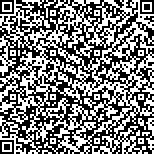| 本文已被:浏览次 下载次 |

码上扫一扫! |
|
|
|
| Response analysis and quantitative inversion of electrical imaging logging in oil based drilling fluid environment |
|
GAO Jianshen1, SUN Jianmeng2, JIANG Yanjiao3, YU Qijiao4, LIU Yanping1
|
|
(1.Key Laboratory of Education Ministry for Photoelectric Logging and Detection, Xi 'an Shiyou University, Xi 'an 710065, China;2.School of Geosicences in China University of Petroleum(East China), Qingdao 266580, China;3.College of Geosciences,Northeast Petroleum University, Daqing 163318, China;4.Well Logging Company of Shengli Petroleum Engineering Company Limited, SINOPEC, Dongying 257061, China)
|
| Abstract: |
| Aiming at existing problems of electrical imaging logging technology in oil based drilling fluid environment,the apparent resistivity characteristics of a vertical coupling method and conventional processing methods are studied using numerical simulation. Then, the formation resistivity and the standoff between the instruments pad and formation are inversed quantitatively using support vector machine for regression. The effectiveness of this inversion processing is verified by comparing results with that imaged in a water based drilling fluid environment. Fuzzy images in the conventional processing for low-resistivity formation is resolved, and the reversal problem that may occur in the vertical coupling method for high-resistivity formation is eliminated.The low or high formation resistivity and the standoff variation in relatively low-resistivity formation can be interpreted quantitatively. This study can greatly benefit data processing for electrical imaging logging in oil based drilling fluid environment. |
| Key words: oil based drilling fluid electrical imaging logging support vector machine for regression (SVR) quantitative inversion formation resistivity |
|
|